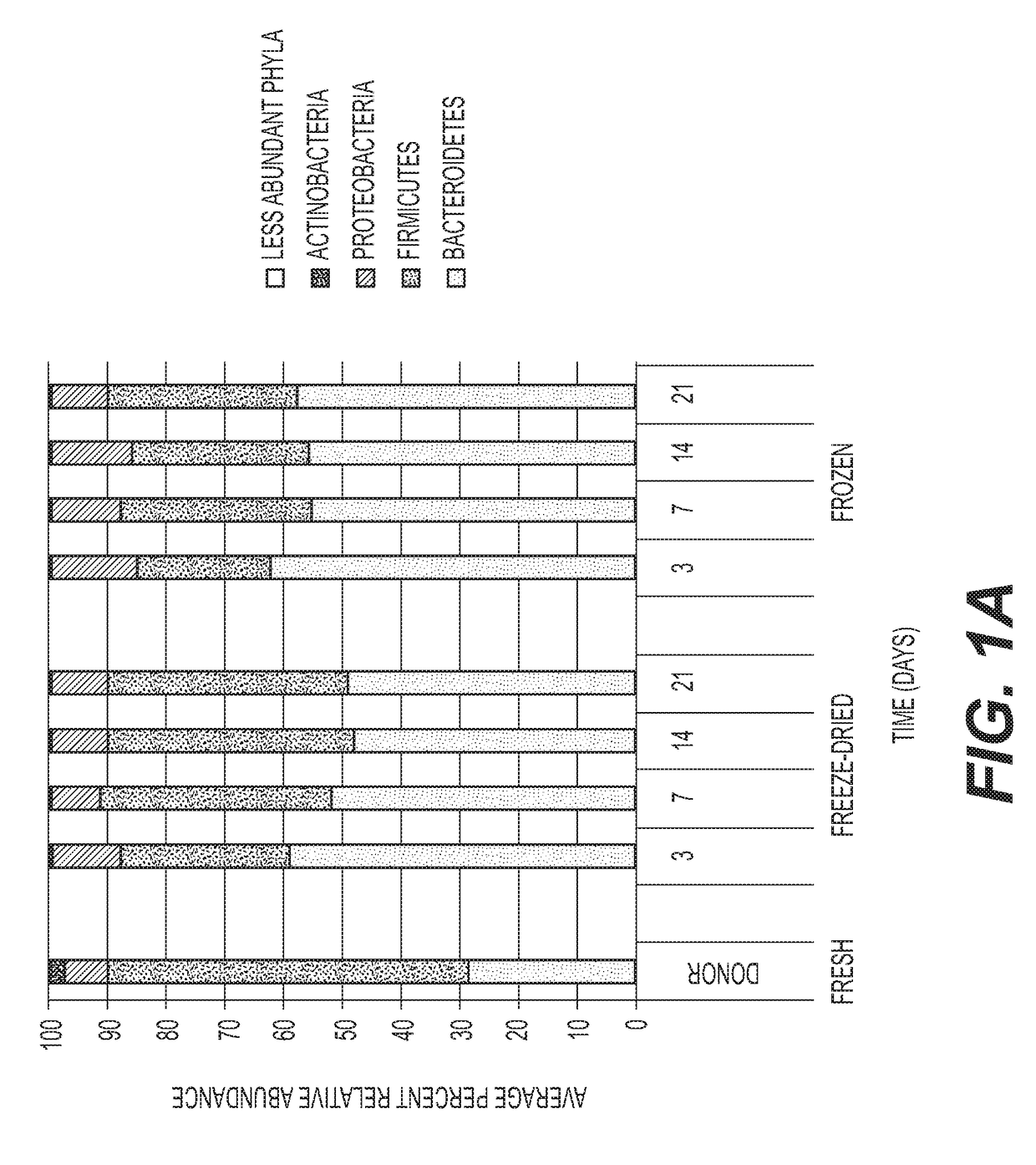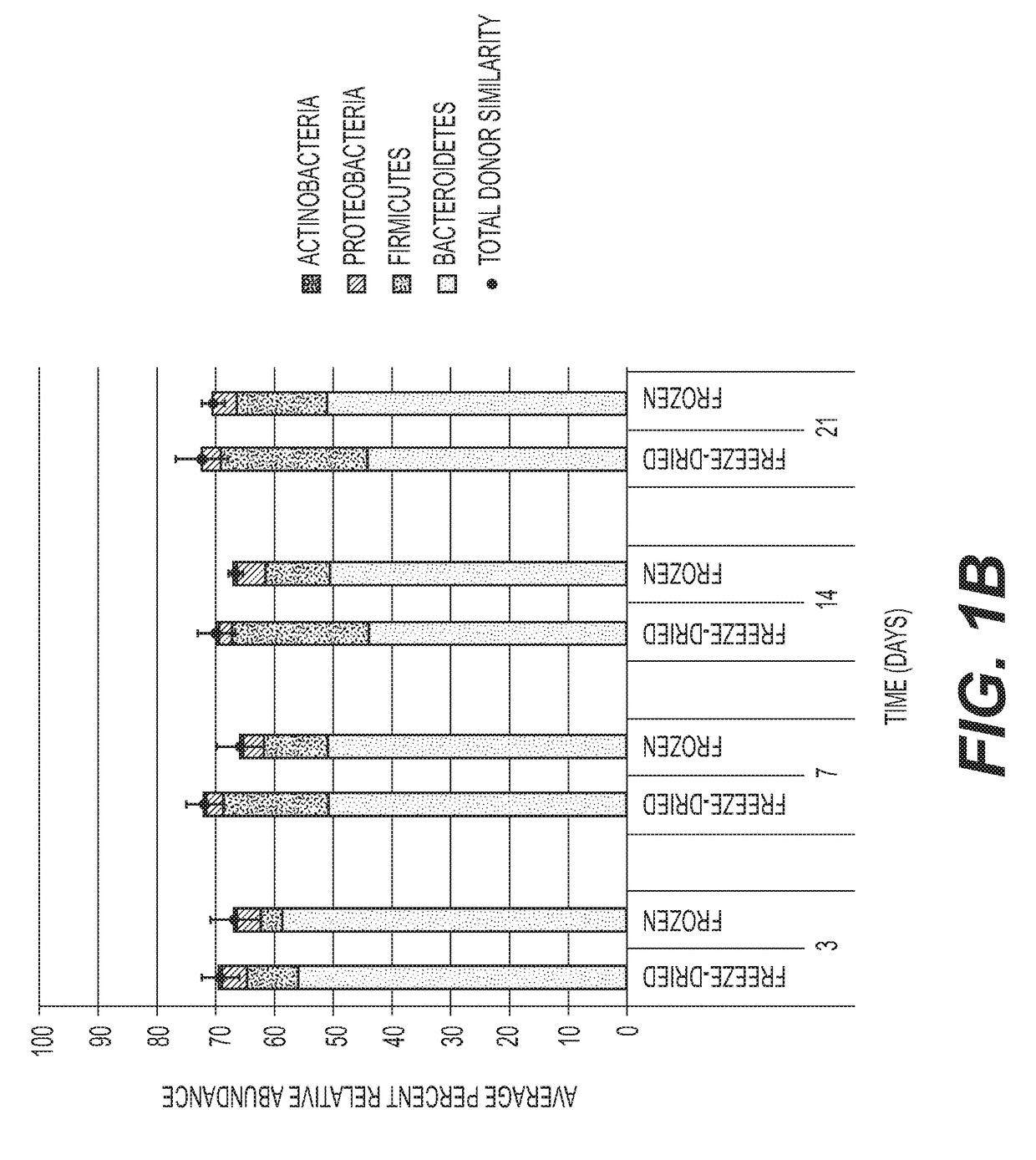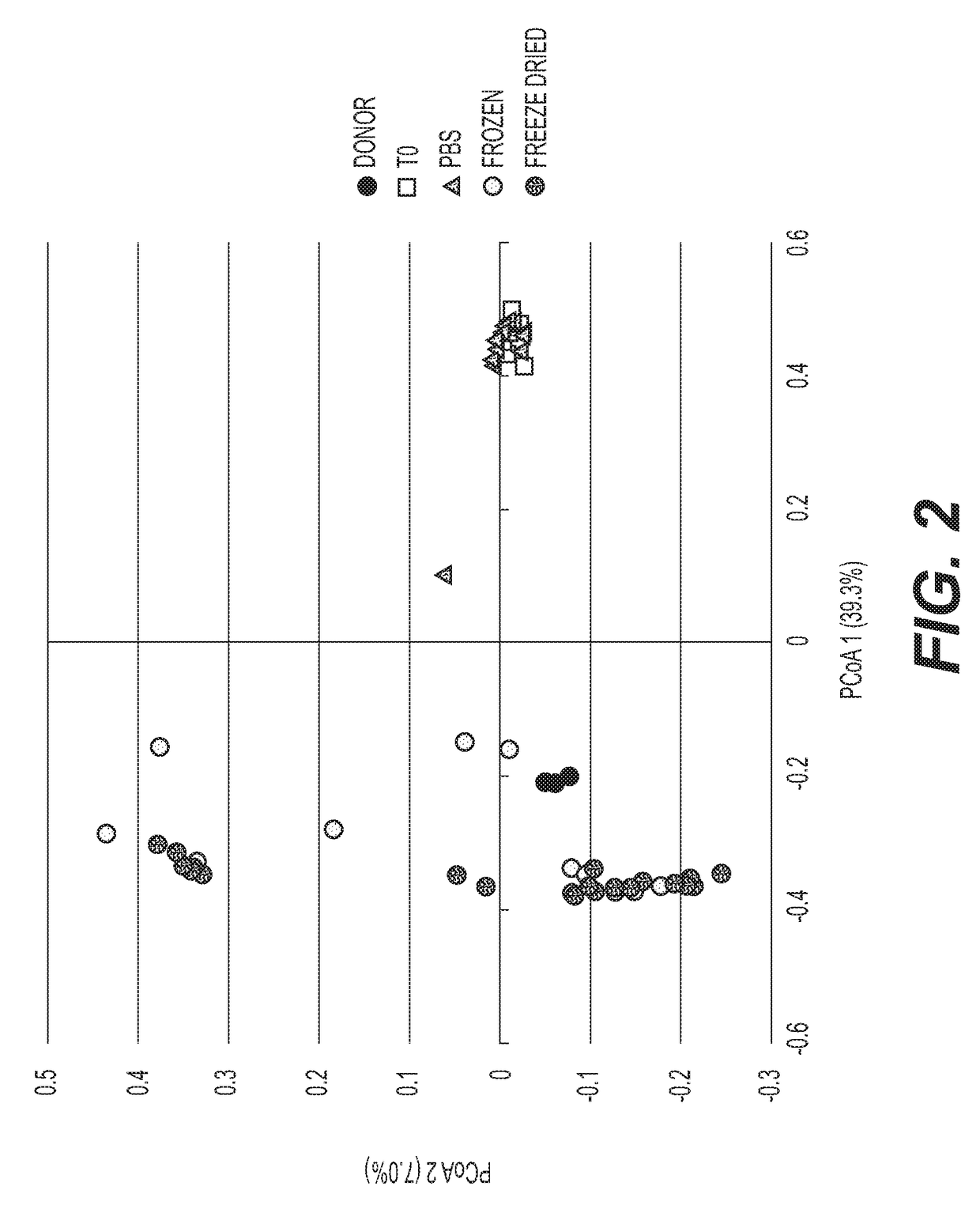Compositions and methods for c. difficile treatment
a technology of c. difficile and composition, applied in the field of medicine and gastroenterology, pharmacology, microbiology, can solve the problems of reducing colonization resistance, affecting the normal microbial community structure, and increasing the vulnerability of antibiotics to infections
- Summary
- Abstract
- Description
- Claims
- Application Information
AI Technical Summary
Benefits of technology
Problems solved by technology
Method used
Image
Examples
example 1
[0155]Fecal bacteria are prepared using the standard methods as previously described in Hamilton et al. Am. J. Gastroenterology 2012; 107:761-7, except that glycerol is substituted with one of the following cryoprotectants (all chemicals were USP grade or better and prepared in PBS, pH 7.0): 5% sucrose only; 10% sucrose only; 10% skim milk only; 5% trehalose only; 10% trehalose only; 10% trehalose plus 2.5% sucrose; 5% trehalose plus 2.5% sucrose; 5% mannitol only; or 10% mannitol only. The lyophilizer (LyoStar II, Stone Ridge, N.Y., or equivalent) used has a shelf temperature of −20° C. for 36 hours followed by 6 hours at +30° C. All steps are done under 100 mT vacuum or less, and the final product is held at +20° C. until used. The total dose is 2.5×1012 cells.
[0156]Specifically, the cyroprotectants mannitol and trehalose, at 5% or 10% concentrations yield preparations that can be broken into a fine powder and easily packaged into capsules. However, viability of bacteria with treh...
example 2
[0158]Germ-free mice are bred and maintained in the germ free facility at the Mayo Clinic (Rochester, Minn., USA). Animals are administered microbiota or PBS via oral gavage, 100 μL per dose. Microbiota preparations include frozen / thawed liquid with 10% glycerol, as described previously or rehydrated freeze-dried microbiota in 5% trehalose. The dosage to each mouse, of either frozen or freeze-dried material, is 1010 cells. Fecal pellets are collected prior to gavage, as well as 3, 7, 14, and 21 days following gavage.
[0159]In order to ensure that the different taxa of microbiota are preserved by the freeze-drying protocol, preparations in germ free mice are tested. Comparison is made to frozen / thawed liquid preparation with glycerol. Prompt and stable engraftment of all bacterial phyla is evident for both frozen and freeze-dried treatment groups. FIG. 1A shows a distribution of phyla among all mouse fecal pellets and donor samples, without rarefication. FIG. 1B shows the Phylum-level...
example 3
[0161]Double-encapsulated capsules are prepared by using a filled size 0 capsule packaged inside a size 00 capsule. Hypromellose capsules are DRcaps® from Capsugel (Morristown, N.J.). Capsules are manually filled using a 24-hole filler (Capsule Machine, Capsule Connection, Prescott, Ariz.) to a final concentration of ˜1×1011 cells / capsule. The capsules are stored at −80° C. (a convenient dry storage option) in 50 mL conical tubes until needed. Once taken out of the freezer, a dessicant packet is added to the container. The length of storage period at −80° C. does not appear to impact the effectiveness of the capsules (Table 3).
TABLE 3Storage duration of encapsulated microbiotaprior to dispensing to the patients.Number of patientsPatients thatthat underwent rescueunderwent their firstcapsule FMT followingFMT using capsuleDuration infailure of colonoscopicadministration:−80° C. storageFMT: failure / successfailure / success0-3months3 / 43 / 153-6months1 / 00 / 5 6-9months0 / 10 / 3 9-12months1 / 01 / 12
PUM
| Property | Measurement | Unit |
|---|---|---|
| temperature | aaaaa | aaaaa |
| particle filter size | aaaaa | aaaaa |
| particle filter size | aaaaa | aaaaa |
Abstract
Description
Claims
Application Information
 Login to View More
Login to View More - R&D
- Intellectual Property
- Life Sciences
- Materials
- Tech Scout
- Unparalleled Data Quality
- Higher Quality Content
- 60% Fewer Hallucinations
Browse by: Latest US Patents, China's latest patents, Technical Efficacy Thesaurus, Application Domain, Technology Topic, Popular Technical Reports.
© 2025 PatSnap. All rights reserved.Legal|Privacy policy|Modern Slavery Act Transparency Statement|Sitemap|About US| Contact US: help@patsnap.com



